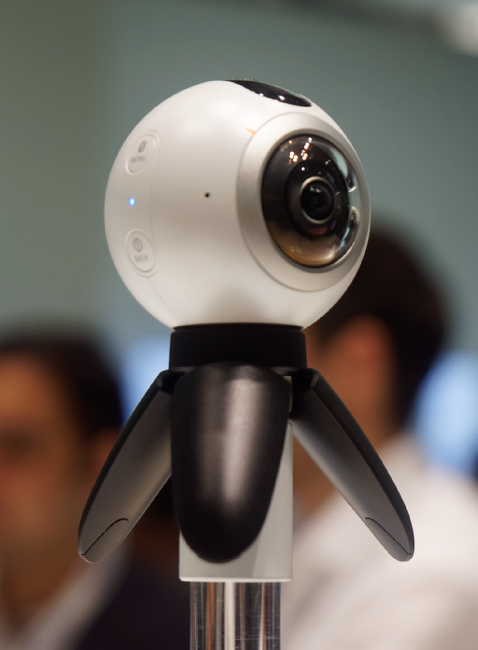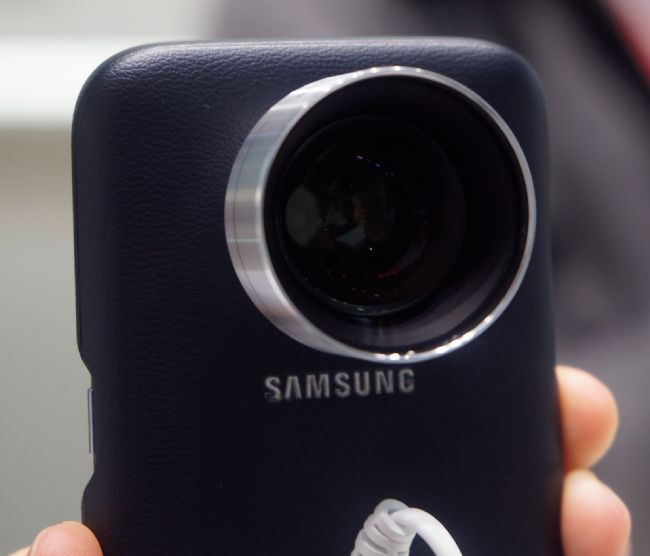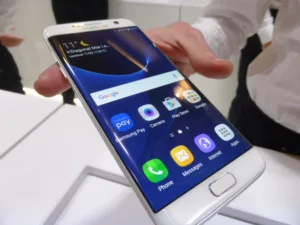We were able to go hands-on with the Gear 360 after the event. We believe that the camera will act as a marketing tool for Samsung – convincing customers to upgrade their phones to benefit from new VR experiences.
 Samsung’s Gear 360 Image:Meko
Samsung’s Gear 360 Image:Meko
Samsung’s stand was largely dedicated to the Galaxy S7, and we were able to uncover some of the specifications, too. Both variants have 2560 x 1440 resolution and run on either an octa-core (2.3GHz quad-core and 1.6GHz quad-core) or quad-core (2.15GHz dual-core and 1.6GHz dual-core) processor. We understand that this depends on the market. RAM is 4GB, with 32GB/64GB of storage.
The S7 is the first smartphone to use Samsung’s new Exynos 8 Octa processor, its second-generation 64-bit 14nm device.
Elsewhere, the phone was being used to showcase an end-to-end demonstration of 5G, with Deutsche Telekom’s 60GHz millimetre wave small cell solution. Samsung’s phones were being used to track to movements of a robotic arm, from two angles. UltraHD video was transferred over-the-air, without a delay, using 5G. We heard that throughput was higher than 1.5Gbps on each smartphone.
Other areas of the Samsung stand focused on the company’s existing technologies, such as automotive (Samsung Connect Auto), security (Samsung Knox) and mobile payments (Samsung Pay). The BBC Microbit computer, a Raspberry Pi-like device designed to get children into programming, was also being shown. The BBC developed the Microbit with Samsung.
 Samsung has an extra lens for the S7 which screws into the Samsung case, rather than attaching directly to the phone.
Samsung has an extra lens for the S7 which screws into the Samsung case, rather than attaching directly to the phone.

